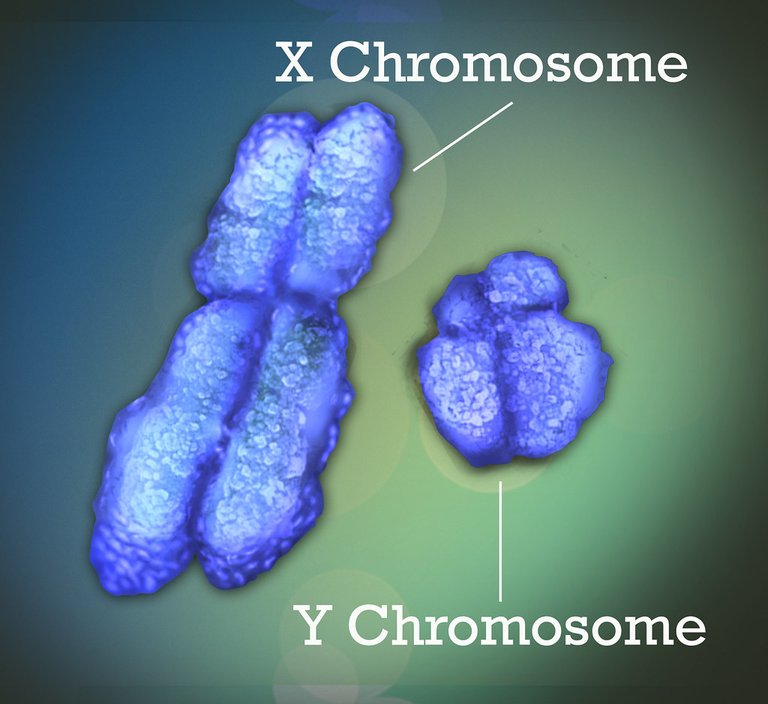Scientists believed that sex was straight forward based on 23 pairs of chromosomes we have being male or female (as in black and white), so straight forward as males have the XY chromosomes while females have the XX chromosomes but it looks like scientists are now going to be doing a lot of work.
Scientists have began to say that sex is a spectrum and although a lot of research is still being done scientifically on this. When I say identifying the sex, I am not refering to social or cultural attributes in the term of gender, neither am I talking about sexuality which describes who a person is attracted to. I am talking Biology here, and let's do science.
In explaining this, I will be looking at the chromosomes, the Gonads, the genitalas, and the hormones in the body and scientists have been able to see that these features don't agree with one another. According to estimates, about 2% of all births have congenital conditions of atypical sex development which means there is a difference in one of the previously mentioned features that people would expect for them to be boys or s girls. You might look at 2% as little but if we are to go by numbers, it means that about 130 million people (the combined population of France, Spain, and Canada) have this defect. This congenital condition was referred to as being Intersex in the past but in recent times, it is reffered to as Differences of Sexual Development.
With Differences of Sexual Development (DSDs), it isn'talways visible as people could spend the better part of their lives thinking they are boys based on anatomy whereas part of them are girls and vice versa. It can be very scary to know this after living the major part of ones live thinking they are a particilar sex beased on sexual differenciation and not sexual determination. With Chromosomal Sexual determination, it has to do with chromosomes which then determines the sexuatl differentiation which has to do with the physiological characteristics associated with the sex.
The two are required to determine the sex of a person and differentiation doesn't stop after birth, it continues throughout the lifetime of a person which means that people can begin to experience different phenotypical changes contrary to the phenotypical male which has testicles, and penis, while phenotypical females having Uterus, Ovaries, Vulva, and a Vagina. There are a lot of variation between these sexual characters as someone could look female phenotypically but not possess overies and Uterus, or they might also have both the tissues for Ovaries and Testes.
With genetics, it can even be more complex as when chromosomes divide to give half of the 46 chromosomes from both gamate, there can be different combinations, also the chromosomes aren't always 23 in some cases causing them to inherit different combinations of chromosomes such as 2 Xs and 1 Y (XXY) such as in the case of Klinefelter syndrome or in cases of 3Xs chromosomes, and in cases of 1X and 2Y chromosome. Before I forget, I should mention that there is the Turner Syndrome where females have only 1X and these people are usually sterile, shorter, and can experience mental disabilities.
Before you start to wonder if these chromosomal differences occur, there are people who do not have the same chromosomal makeup in their cells which means they have a combination of chromosomes. These people suffer from conditions like Mosaicism, and Chimera which can result in complex sexual characteristics including combined phenotypical body parts. There are also people with the XX or XY genes that do not still have belong to females and males respectively and do not be shocked. This is because there are at least 25 genes that play roles in sex differentiation and mutation during fetus development can be the cause of these changes.
People who suffer from Congenital Adrenal Hyperplasia where the adrenal gland produces little cortisol and excessively produces androgen can lead to health problems where there would be external male genitalia and internal female ganads in people with the XX chromosome which is supposed to be for females.
Our understanding of sex as a binary concept has evolved significantly in recent years. The recognition of sex as a spectrum highlights the complexity and diversity of human biology. By embracing this nuanced perspective, we can foster greater inclusivity and understanding of the diverse range of human experiences related to sex and gender.
Read More
https://www.nhs.uk/conditions/differences-in-sex-development/
https://www.ncbi.nlm.nih.gov/books/NBK9967/
https://www.ncbi.nlm.nih.gov/books/NBK279001/
https://www.nhs.uk/conditions/klinefelters-syndrome/
https://www.ncbi.nlm.nih.gov/pmc/articles/PMC2987225/
https://kidshealth.org/en/parents/xyy-syndrome.html
https://www.nhs.uk/conditions/turner-syndrome/
https://www.ncbi.nlm.nih.gov/pmc/articles/PMC10170864/
https://obgyn.onlinelibrary.wiley.com/doi/10.1111/tog.12667
https://pubmed.ncbi.nlm.nih.gov/25905393/
https://www.ncbi.nlm.nih.gov/books/NBK448098/
https://www.nichd.nih.gov/health/topics/cah/conditioninfo



